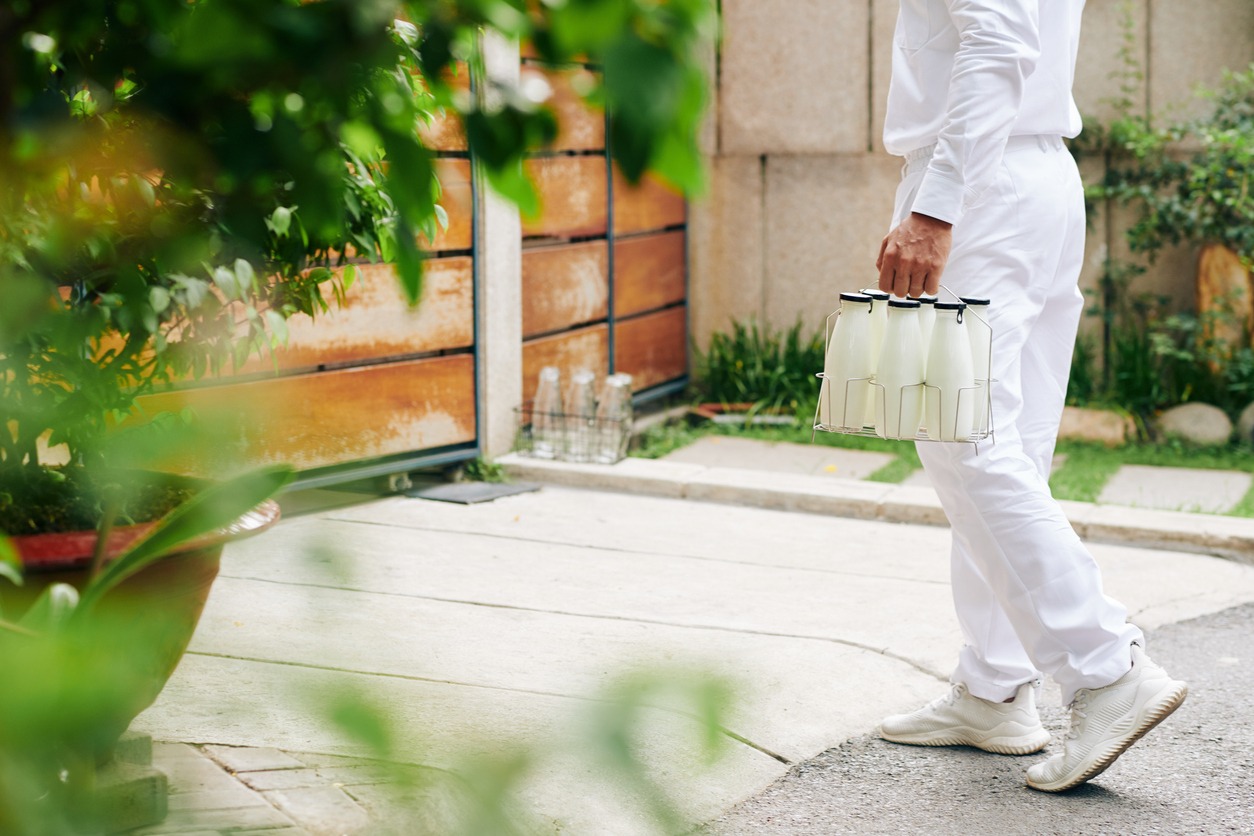Remember how the milkman would deliver fresh milk and collect empty bottles every day? That classic, reusable packaging model is making a comeback, now with a more intentionally eco-conscious approach.
What Is the Modern “Milkman Model”?
The modern milkman model is a reimagining of its namesake. It’s a closed-loop system where companies deliver products in sturdy, reusable containers. These containers are then collected, sanitized and refilled for the next customer. Instead of the familiar use-and-dispose approach that defines single-use packaging, the milkman model keeps materials in use, which significantly reduces packaging waste.
As more people become aware of the harmful effects of disposable packaging, more milkman-style services are popping up, offering groceries, cleaning products and personal care items. Brands, like Loop, are partnering with grocery stores to popularize reusable packaging, usually made from glass and metal. Everyday household products like olive oil, condiments, baby food, granola and more could be eligible. If initiatives like this gain more traction, they can serve as a blueprint for the mainstream adoption of sustainable consumption.
Why Reusing Is the New Recycling
While there are three Rs — reduce, reuse and recycle — recycling has dominated the conversation when it comes to handling waste. However, data shows only 9% of plastic waste actually gets recycled. The rest often ends up in landfills, burned or floating in the ocean, which poses significant risks to the environment and wildlife.
Every year, around 100,000 marine animals die from ingesting or getting tangled in garbage floating in the oceans. The milkman model addresses these challenges by designing the system to minimize waste. Instead of creating something meant to be thrown away, it designs packaging meant for repeated use, which means less pollution and lower emissions.
The Business of a Greener Supply Chain
Aside from the environmental benefits, there is a strong business case for implementing the milkman packaging model. Reusable containers can reduce long-term packaging costs, since your customers will use the same bottles for their entire usable life.
This initiative can also build stronger loyalty among eco-conscious consumers. Research shows over half of customers are willing to pay more for sustainability. It’s a wise investment in cost-efficiency and customer satisfaction.
Many brands are already exploring eco-friendly packaging approaches, which can take several forms. Aside from the milkman model, or reusable packaging route, others are using compostable packaging that adds minimal waste to the environment.
How You Can Support the Zero-Waste Movement
In 2023, the world generated 2.1 billion tons of solid waste, most of which ended up as pollutants. Growing awareness of the scale of global waste, and its effects on the environment, has encouraged many people to live more sustainably.
Transitioning to a zero-waste lifestyle can happen gradually. Here’s how you can adopt its principles in your everyday life:
- Start with a simple waste audit: Pay attention to what you throw away in a week. Identifying your biggest sources of waste makes it easier to find points where you can reduce your consumption or find reusable alternatives.
- Seek out local refill and delivery services: Many cities now have refill stations or local milkman-style delivery networks. Search for refill shops or services offering reusable packaging for everyday products.
- Opt for reusable packaging: Choose brands that prioritize returnable or refillable containers. If there aren’t any around you, you can use your own jars, bottles and bags when shopping in person.
- Advocate for more options: Encourage your favorite brands and local stores to adopt refill or return programs. You can also join community organizations to call on your local government to support the same initiatives. Collective action encourages results.
Closing the Loop on Waste
The path toward sustainability means embracing systems that work. The revival of the milkman model shows good, practical design will stick around. By choosing reusable packaging and supporting companies that prioritize circular systems, you can help build a future where products are designed to last.
Source link
Ellie Gabel biofriendlyplanet.com



